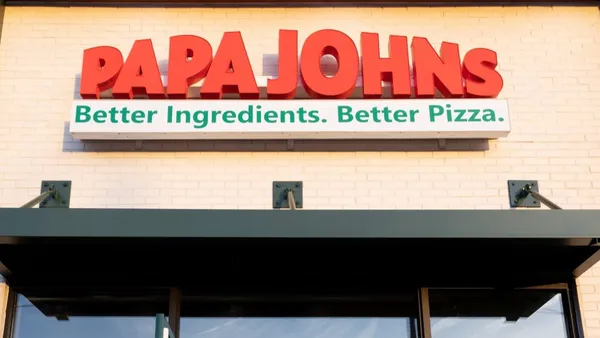Dive Brief:
- McDonald’s has gained market share for the first time in five years, according to CNBC, and the QSR giant credits the boost to adding fresh beef to its lineup.
- Switching to fresh beef cost its meat suppliers roughly $60 million and took over four years to fully implement, but Quarter Pounder sales rose roughly 30% in the first year of the nationwide rollout.
- The chain also added new refrigerators specially designed to keep fresh beef at the right temperature, as well as specific utensils for handling fresh beef.
Dive Insight:
In a day and age where consumers are wanting more natural and less processed food ingredients, fresh beef is a surefire win. McDonald’s switch to fresh beef was part of a broader effort to improve the quality of its menu as health-conscious millennials began to avoid its restaurants.
But going fresh has serious challenges and higher risks than sticking to frozen ingredients. If the fresh ingredients don’t sell in time, then the chain has to eat the cost and toss the expired food. Making the switch across its massive footprint was likely a burdensome undertaking, but a boost in market share means that the effort was worth the headache. It’s scaled back on some other initiatives, perhaps in order to focus on the fresh beef rollout. It recently announced that it's dropping its premium line of Signature Crafted Recipe sandwiches, for example.
As the leading fast food chain on the planet, McDonald’s can move the needle when it comes to changes in restaurant supply chain logistics and sourcing, so it would be unsurprising to see a number of other burger brands start to follow suit with fresh beef or fresh ingredient offerings. A few have already included fresh ingredients on their menus. Wendy’s has always boasted that it’s beef patties are fresh and never frozen and even trolled McDonald’s back in March of this year on Frozen Food Day. McDonald’s made its announcement about adding fresh beef the day prior.
McDonald’s commitment to quality can be seen in other aspects of its recent changes and efforts. Last year, McDonald’s phased out antibiotics in beef throughout 85% of its supply chain and launched made-to-order chicken tenders and sandwiches for its chicken lineup. Both moves are aimed at improving the quality of its offerings, which is an intriguing move as most QSRs double down on new technology, food delivery capabilities and in-store experience. It seems likely that other fast food brands will consider adding fresh beef given McDonald's results, so long as they can swing the cost of transition — a shift that could threaten higher-priced, better burger brands that hang their hat on beef quality.













